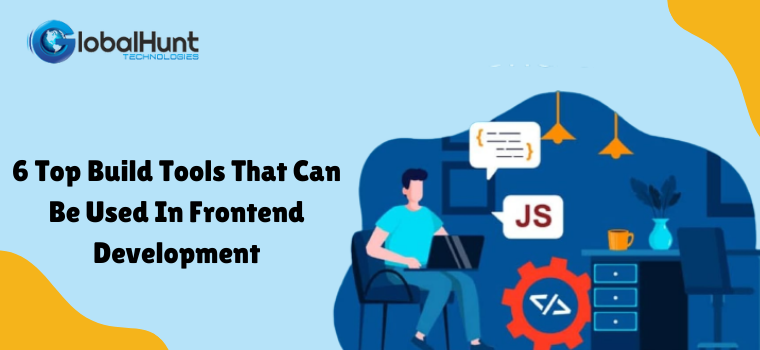
Code that is utilized in production is distinct from development code. Within production, you have to build packages that execute quickly, handle dependencies, capable of automating or mechanizing operations, capable of loading external modules, etc. Build tools are basically tools that are capable of turning development code to production code. In Frontend development developers generally utilize the subsequent kinds of build tools:
- Task runners
- Package managers
- Module bundlers
- Module loaders, etc.
In this section, some of the top build tools that can be utilized in frontend development are presented. Some of the top build tools that can be utilized in frontend development are presented. It is important to consider that all of these tools presented in this section do not accompany a graphical user interface (GUI) and all of these tools operate in the command line.
NPM – Package Manager
NPM stands for Node Package Maid. Furthermore, the default package manager of Node.Js is npm.
At the time of installing Node.Js on a computer or system, npm install automatically and it is possible to access it from/through a command-line interface. Through NPM, it is possible to install a Node.js package through a command.
All present Node.js packages can be found within the npm registry and can get access through the search bar/option present on the official homepage of npm. You simply require entering the name of the package that you are searching for within the search bar. Then, you move to the package webpage that comprises all things you require details informing about the package, the installation procedure of the package, and its entire dependencies.
Salient characteristics:
- Simple installation procedure.
- Cross-platform software (Linux, Windows, macOS, etc).
- Plenty of packages.
- Several configuration options (via the command line).
- Effective dependency management via the package.json file.
- Vast documentation and supportive community.
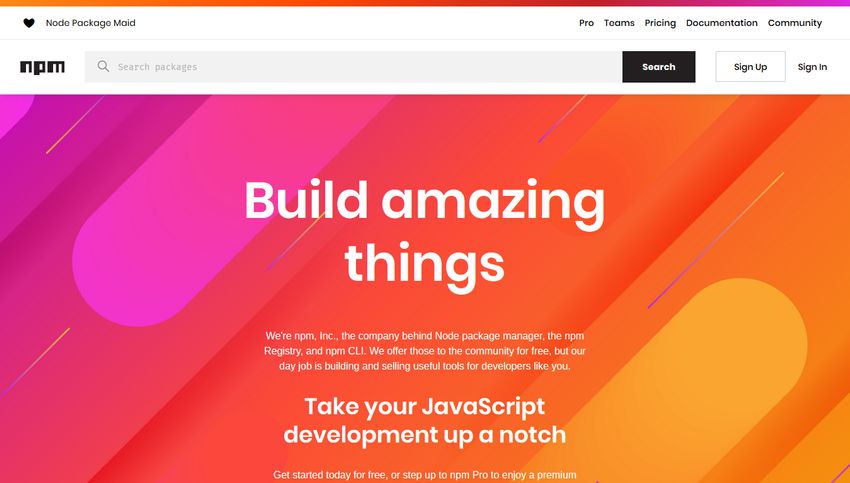
Yarn – Package Manager
Yarn is basically a frontend package manager that can be utilized as a substitute for npm. Since Yarn is actually a Node.js package, you need to install Node.js ahead of utilizing Yarn on your computer. Thereafter, you simply require abiding by the installation guide to utilising to administer your frontend dependencies.
Even though npm is an awesome frontend development tool, you are going to discover that building packages through it occasionally requires considerable time. That is not an issue in case you do not have several dependencies for installing or do not utilize a package manager regularly. Although, in case you are having a massive usage, it can be a suitable option to explore and check out Yarn.
Yarn accelerates the build procedure by caching each package in order that you do not need to download your dependencies several times. Moreover, it even executes simultaneous operations in order to minimize build times additionally.
Salient characteristics:
- Quick build times.
- Offline mode.
- Flat mode to avert making duplicates.
- Additional security through utilizing checksums in order to confirm the integrality of packages.
- In accordance with the entire Node.js packages.
- Cross-platform tools have distinct installation guides with respect to each platform.

Grunt – Task Runner
Grunt is basically a frontend task runner that enables automating recurring operations including testing, linting, minification and more. Task runners are distinct from package managers since you cannot utilize them for managing dependencies. You simply require them in case you wish to conduct the same operation(s)/task(s) in each build procedure.
Since Grunt is actually a Node.js package, developers install it with Yarn, npm or different Node.js package managers. Furthermore, Grunt holds the customized/custom dependencies it requires to conduct your already defined operations within the package.json file. Tasks are within the Gruntfile that executes in each build procedure as well as automatically carries out each operation it comprises.
Salient characteristics:
- Extensively used.
- Non-synchronous operations in case required.
- Simple configuration procedure.
- The massive ecosystem has several plugins including frontend tools (including Jade, Sass, Handlebars, RequireJS, JSHint, and more) that finish the already defined tasks.
- Vast documentation.
- It is a cross-platform command-line tool.

Gulp – Task Runner
Gulp is an additional automated task runner. Alike Grunt, Gulp can be utilized for automating repetitive front-end operations including auto-prefixing, CSS preprocessing, image optimization, etc. It is actually a Node.js package, as well, that can be installed with Yarn and npm. Tasks can be defined in the Gulpfile and dependencies associated with your tasks can be configured in the package.json file.
The major dissimilarity with Grunt is that Gulp utilizes a highly effective automation approach that enables quicker build times. Grunt utilizes temporary files for processing the operations, Gulp carries out in-memory tasks devoid of writing to temporary files. Those in-memory tasks/operations are known as Node streams that are capable of saving plenty amount of time, particularly in case several tasks are wished to be processed at every build.
Salient characteristics:
- Cross-platform task runner. Install it like a standard node.js package.
- Utilizes Node streams to accelerate processes.
- Simple to abide by documentation.
- Vast ecosystem having several plugins.
- Fine code foundation/base utilizing Node.js finest approaches.
- Minimum API surface for easy use.
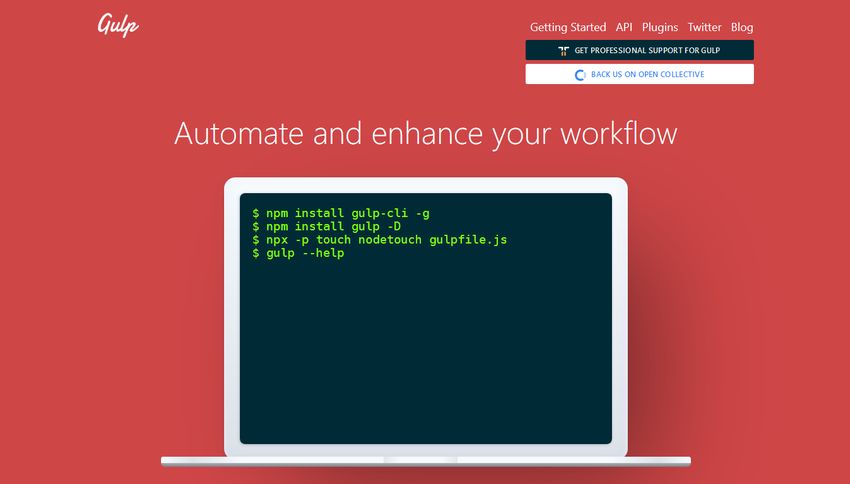
Browserify (Module Loader/Bundler)
Browserify is basically a module loader that enables you to bundle and loads yours like a one JavaScript file in the browser of the user. Package managers like Yarn and npm are capable of loading modules on the server-side utilizing require the () function of Node.js. The function is meant for loading modules. Browserify carries the require () approach to the client-side, which can lead to a massive performance advantage.
Through Browserify, the web browser of the user requires to load simply one static JavaScript file that consists of the entire dependencies your project depends upon. Bundled JavaScript can be added like a <script> tag to the page. Although it is important to consider that Browserify is basically a node.js module as well as utilization of the CommonJS API (like npm), you can simply utilize it for loading Node.js modules and not different types of JavaScript (or different) files.
Salient characteristics:
- Capable of bundling all Node.js dependencies into one file.
- Accelerates modular applications that depend upon several Node.js modules.
- Bundles can be separated in case required.
- Thorough documentation and useful Browserify handbook.
- Ignore, transform and exclude functionalities.
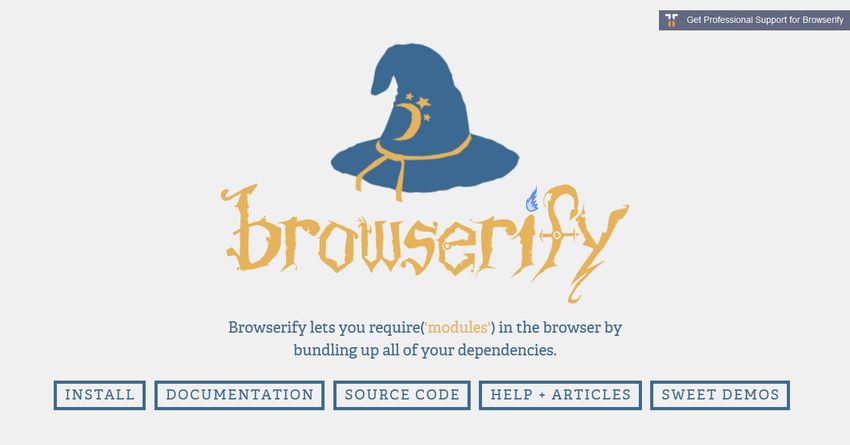
Webpack (Module bundler/loader)
Webpack is another Frontend Development tool which is a high-tech module bundler that enables you to bundle the entire dependencies and get them to load like static assets in the web browser of the user. Browserify simply bundles Node.js modules, Webpack is capable of handling all types of frontend files including .css, .html, .js, .scss files, images and different assets.
Webpack can even bundle AMD and native ECMAScript modules. Webpack studies your project and develops a dependency graph. Thereafter, on the basis of the dependency graph, files and modules get bundled into single or additional static files that can be added to the HTML page.
Since Webpack is a Node.js module, it can be installed either with Yarn or npm package manager.
Webpack projects’ configuration takes plenty of time because of several options that allow correcting the project. But, Webpack 4, comprises a zero-configuration option that makes the build procedure automatic and defining the entry file is the only requirement.
Salient characteristics:
- Vast ecosystem has a fine plugin interface.
- Several configuration options.
- Zero-configuration option (from Webpack 4).
- Source maps supported.
- Dead code removal/elimination.
- Splitting of code into small sections that are capable of loading non-synchronously.
- Hot module replacement.
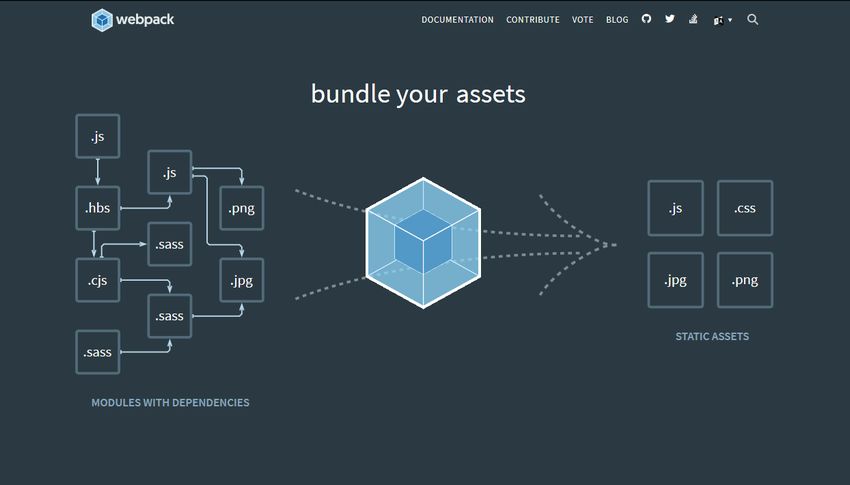
In Conclusion
Through the application of front-end build tools, turn your development code into production-ready code that executes on a platform or device devoid of an issue. In this section, we are exploring build tools that developers utilize in web projects, comprising module loaders/bundlers, task runners and package managers.
Along with the extensively used solutions, there are new tools that are consistently gaining popularity, including the pnpm package manager (a substitute to Yarn and npn), Rollup ES module bundler (like Browserify however bundles ECMAScript modules rather than CommonJS ones) and Parcel module bundler (a substitute to Webpack). In case you are looking for new solutions, these new tools can be checked out. Including new tools in your flow of work is capable of taking your development procedure to an advanced level.
Are you looking for a Frontend Developer expert? If so then, we have got everything covered. Also, get the best web development services here at Global Hunt Technologies.
- App Store Optimization
- Artificial Intelligence
- CakePHP
- Competitor Analysis
- Content Marketing
- Custom PHP
- Digital Marketing
- eCommerce
- eCommerce SEO
- Email Strategy
- Facebook Marketing
- Google Adword
- Google Algorithm
- Instagram Marketing
- Jobs
- LinkedIn Marketing
- Magento SEO
- Mobile Apps Development
- News
- Online Reputation Management
- Other
- Pay Per Click
- Pintrest
- Search Engine Optimisation
- Social Media Marketing
- Traditional Marketing
- Uncategorized
- Viral Marketing
- Website Design & Development
- Wix SEO
- WordPress
- WordPress SEO

